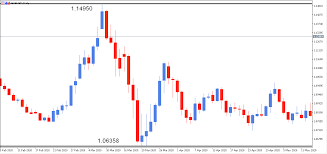When the Floor Gives Way: Inside the Massive Crypto Liquidation Storm
The crypto market just got hit by a shockwave — one of those moments that leaves even veteran traders staring at their screens in disbelief. Billions vanished in hours. Charts bled red. Positions that looked solid a day ago got wiped out in the blink of an eye.
It wasn’t just a dip — it was a liquidation storm. And if you’re wondering what happened, why it hit so hard, and what it means for traders, you’re not alone. Let’s unpack this.

Billions Gone in a Flash
Imagine this: you go to sleep with your Bitcoin long up 15%, and wake up to see your margin call flashing bright red. That’s what happened to thousands of traders this week. In just one 24-hour stretch, over $19 billion worth of leveraged positions were liquidated as Bitcoin plunged more than 10%. A domino effect of forced selling followed, leaving chaos in its wake.
And it didn’t stop there. A few days later, another $1.7 billion in liquidations hit, with nearly 90% coming from over-leveraged longs.
It’s the kind of market bloodbath that reminds everyone: in crypto, gravity works fast — and hard.
Liquidations: The Silent Killers
A “liquidation” sounds harmless enough. But in crypto, it’s the monster under the bed.
Here’s how it happens. When traders borrow money to go long — betting on prices going up — they agree to keep a certain margin, a safety cushion. If the price drops too much, that cushion disappears. The exchange automatically sells off their position to protect itself.
Now multiply that by thousands of traders. Add bots, stop-loss triggers, and cascading sell orders. What you get isn’t just panic — it’s an avalanche.
In traditional markets, regulators can pause trading when things spiral. In crypto, there’s no pause button. When leverage unwinds, it’s fast, brutal, and unstoppable.
How the Dominoes Started Falling
So what caused this latest liquidation storm? It wasn’t just one thing — it was a perfect mix of pressure points snapping all at once.
-
- Global tensions: A new wave of U.S. tariffs and economic uncertainty spooked risk markets. Traders ran for cover.
-
- Too much leverage: Everyone was too confident, too exposed. When prices dipped, there was no buffer.
-
- Technical breakdowns: Once Bitcoin lost a key support level, algorithms kicked in, dumping millions automatically.
-
- Low liquidity: During volatile times, fewer buyers step in — so each forced sale pushes prices even lower.
It was a storm waiting to happen. And when it hit, it tore through the market like wildfire.

Why Crypto Hurts More
Here’s the hard truth: crypto feels pain differently than traditional markets.
For one, the leverage is insane — 50x, 100x, sometimes more. That means tiny moves can erase entire portfolios. And because crypto never sleeps, there’s no off switch. Prices swing day and night.
Add to that the herd mentality — when traders pile into the same direction, it creates a ticking time bomb. The moment sentiment flips, everyone tries to exit the same door. Spoiler: not everyone fits.
Lessons for Traders
If you trade crypto, this latest bloodbath wasn’t just a warning — it was a masterclass in risk.
-
- Respect leverage. It’s not free money — it’s borrowed time.
-
- Know your liquidation price. Don’t just hope; calculate exactly where your trade dies.
-
- Read the room. When sentiment feels euphoric, risk usually hides right behind it.
-
- Plan your exits. Don’t rely on emotion or luck when the candles turn red.
-
- Diversify. Never put all your chips on one bet, no matter how “sure” it seems.
The traders who survive aren’t always the smartest — they’re the ones who stay disciplined when everyone else panics.
Ripples Across the Crypto World
The aftershocks didn’t just hit Bitcoin. Altcoins like Ethereum and Solana got crushed, some losing double-digit percentages in a single day. DeFi protocols saw liquidity drain as investors rushed to stablecoins. NFT and GameFi volumes collapsed overnight.
Even institutions, who’d recently warmed up to crypto, began to flinch. After all, headlines about “$19 billion in losses” don’t exactly inspire confidence.
But not everyone’s running scared. For long-term believers, this is part of the game — a painful, necessary reset that clears out the excessive greed and lets the market breathe again.
Two Roads Ahead
So where do we go from here? Analysts are split.
Scenario 1: Calm After the Storm
If Bitcoin stabilizes and institutional buyers step back in, we could see a period of quiet consolidation. Prices might range for weeks as traders regain trust. From there, a steady rebound could emerge.
Scenario 2: More Pain Before the Gain
If global risk sentiment worsens or another big outflow hits, brace for more selling. Bitcoin could retest deeper support levels, dragging altcoins down further and shaking retail confidence for months.
Either way, volatility isn’t going anywhere. The only question is — will you let it shake you out, or teach you something?
A Reality Check
It’s easy to see these crashes as disasters. And for some traders, they are. But they also serve a purpose. Crypto has always been a battlefield between innovation and speculation, between vision and greed.
Every liquidation cycle wipes away weak hands and reckless bets, leaving behind those who understand the rules of survival.
As one seasoned trader put it:
“The market doesn’t hate you. It just teaches you. The question is — are you listening?”

Final Thoughts
The massive liquidations that just ripped through crypto weren’t random. They were the result of overconfidence, leverage, and a market that never stops testing its believers.
For traders, this moment is both a warning and an opportunity. The warning: don’t fly too close to the sun. The opportunity: learn, adapt, and build strategies that can withstand the next storm — because there will be another.
In crypto, every fall rewrites the rulebook. But those who stay grounded, cautious, and curious? They’re the ones still standing when the dust settles.
For crypto ETF perspective, continue